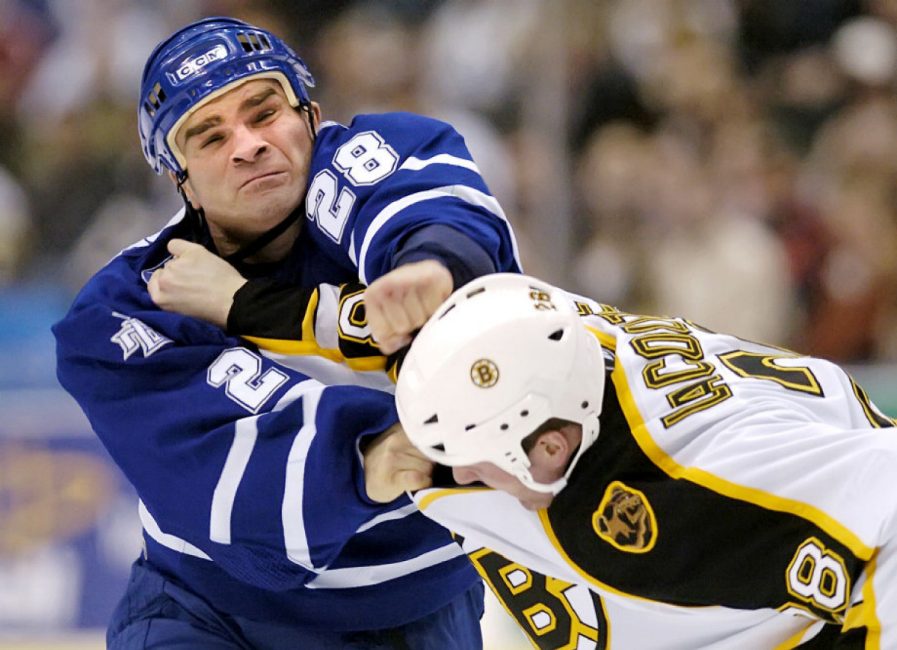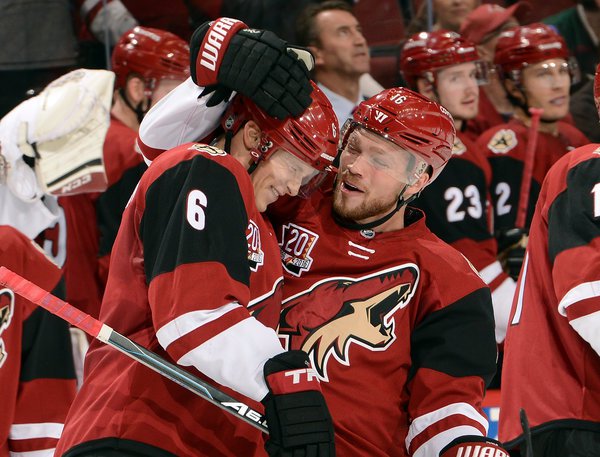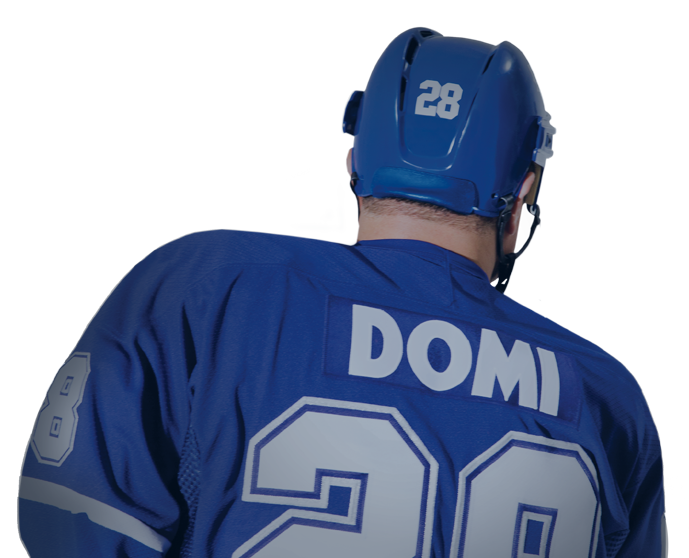
With the exception of alumni games and Slap Shot movie reunions, it’s taken just one generation to usher in the end of the tough guy in a faster, leaner NHL.
JOHN WAWROW – The Associated Press
Tie Domi is no different than any proud hockey father when it comes to worrying about his son.
Having spent 16 seasons establishing a reputation as one of the NHL’s fiercest enforcers, Domi fully appreciates the importance of protecting a team’s marquee players. What concerns him: Who has the back of his 21-year-old son, budding Arizona star Max Domi, at a time when the league has all but eliminated the role of on-ice policeman?
“Obviously, I don’t agree with it, especially having a kid in the NHL now and watching the so-called accountability factor,” Tie Domi said during the recent Centennial Classic weekend in Toronto. “We used to make people accountable. It’s definitely a different taste for sure.”
A sour one, too, after Domi’s fears were realized last month when his son broke his hand in a fight with Calgary’s Garnet Hathaway.
“It’s a learning lesson for him,” the elder Domi said. “Unfortunately, he has a little bit of me in him.”
With the exception of alumni games and Slap Shot movie reunions, where the Hanson Brothers will live forever, it’s taken just one generation — from Tie to Max Domi, for example — to usher in the end of the tough guy in what’s become a faster, leaner and far less gap-toothed era. The evidence was apparent in the Leafs and Wings alumni who took the ice last weekend: The game featured five of the NHL’s top 20 in career penalty minutes, including all-time leader Dave (Tiger) Williams (3,966 penalty minutes) and Domi, who ranks third (3,515).
“How many is there?” cracked Williams, wearing a cowboy hat and big silver belt buckle, when informed the game appeared to be a reunion of aging enforcers. “Well, good. They all showed up.”
Former Toronto star Wendel Clark smiled when asked if he’d consider taking a run at ex-Wing — and current Maple Leafs president — Brendan Shanahan.
“Oh, I don’t know. We’ve never hit a president before,” Clark said. “We’ve never gone that high up the ladder.”
The elder Domi was wearing a throwback leather helmet fit snug to his head following practice, a day before the alumni outdoor game. While holding court on the topic of enforcers, in a hallway at old Maple Leaf Gardens, he stopped mid-sentence to greet former Wings tough guy Joey Kocur. The two engaged in a big hug and a few playful taunts.
“You’re not scoring this year,” Kocur said.
“My mentor,” Domi replied.
How quickly hockey has changed wasn’t lost on ex-Wings enforcer Darren McCarty.
“The game is where it’s buddy-buddy now,” McCarty said. “The only talking over the red line back then is where you were (taunting) a guy or you’re setting up a fight because you say, ‘I’m coming.’ It was never pleasantries.”
McCarty joked he would have never had a chance to play today.
“It’s a different game. You’ve got to understand it’s a college, European-style game,” he said. “I guarantee you, if I grew up and had to play this game, I would be learning how to hit that curveball, because that’s what kept me out of baseball.”
The elimination of the enforcer has been based on a series of rule changes. It began with the NHL in 1992 adding a game misconduct for players who start fights. That led to what was called “show fighting,” where both players would agree to square off so neither would be considered the instigator.
The NHL cracked down further on fighting to protect itself and its players from growing concerns over concussions, and the debilitating toll of repeated punches to the head. Rules freeing up the game from clutching-and-grabbing styles of defence also placed a premium on faster, more skilled players, and further reduced the need for plodding fighters.
A comparison of penalty minutes alone reflects how drastic the change has been.
Heading into Saturday’s action, Dallas Stars forward Antoine Roussel led the NHL with 87 penalty minutes in 35 games. Three months into the 1996-97 season, Vancouver’s Gino Odjick had a league-leading 214 penalty minutes. Roussel’s current total would have been tied for 33rd with Anaheim’s Ken Baumgartner 20 years ago.
Clark has no trouble with hockey’s evolution.
“Basically, it’s whatever society thinks they want to see. That’s it. Society judges all of us,” said Clark, who scored 330 goals and racked up 1,690 penalty minutes during a 15-year career.
As with any sport, Clark said, the top players will adapt and marginal players get shunted aside. One of the alumni game highlights featured Detroit’s Kris Draper and Toronto’s Gary Roberts exchanging shoves and slashes before Williams, Kocur and Domi pulled the two aside before anything escalated.
Oh, the irony of seeing one-time enforcers stepping in to actually stop a brawl.
McCarty couldn’t help but laugh at seeing two hard-hitting forwards such as Draper and Roberts picking up on a rivalry dating to their playing days.
“It’s just second nature that they reverted back to 20 years ago for the moment,” McCarty said. “They’ll laugh about it now, but that’s just what made them great players, and I think you don’t see a lot of that these days.”





